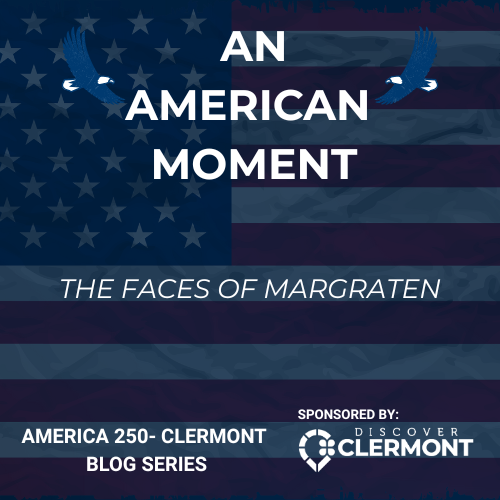Scott was born in 1921. He grew up in the Mulberry community of Miami Township. He attended Milford Schools, but transferred to Terrace Park where he played baseball. After graduating, Paul worked for a while before enlisting in the Army in October of 1942. (Scott's older brother, Woodrow, was a bombardier on a B-17. His plane was shot down over Germany and he spent four months in a German POW camp.)
The final orders were issued. The "Toid Boid" taxied to the runway. The pilot, 2nd Lt. Halmyth Reese, gunned the engines. The Marauder screamed down the cement air strip, lifting off into a cloudless sky.
As the 344 member strike force converged upon the target, German anti aircraft artillery shells filled the sky. At 2:44 P.M. bombardier Sgt. Ralph Brown took control of the aircraft. He peered into the bombing sight. The bomb bay doors whirred open. As Sgt. Brown was about to release the 4,000 pound payload, a German artillery shell, probably an 88mm, Flak 18, detonated inside of the "Toid Boid", with catastrophic impact.
Sgt. Robert Malarkey, a tail gunner aboard a nearby plane, described what happened next to the wounded bird:
"When we were on a bomb run, I saw Lt. Reese's airplane was on fire. The fire was coming from the roots of the wing and was streaming back to the tail. We turned and I lost sight of it momentarily. The next time I saw it, it was spiraling steeply down. I saw it strike on the coast and explode. I did not see any chutes from the airplane."
There were no survivors.
Years later, Mary Lee Scott, a Milford High School graduate and widow of Woodrow, received a package from Roger Zoontjens of the Netherlands. Mary was puzzled. She didn't know Roger. In fact she didn't know anyone from the Netherlands. What possibly could this be about, she wondered?
Inside the package was a photograph of her brother-in-law's grave stone decorated with flowers. Roger explained that he, his wife Patricia, and son Joep, had adopted Paul's grave at the American Military Cemetery at Margraten, the Netherlands. They pledged to decorate the marker on special days to honor Paul and his family's sacrifice to free the Dutch people from Nazi oppression. Mary recalls, "All of this was such a surprise and so gratefully received."
As extraordinary as this gesture is, especially so many years after the war, it is not unique. Every one of the 8,301 Americans who repose at Margraten have been adopted by a local family. What could explain this unusual level of devotion?
Roger, a World War 2 reenactor, remembers stories his grandfather told him about the dark days of the Nazi occupation. Seventy-five percent of the country's Jews, including Anne Frank, were murdered in the Nazi death camps. Thousands of Dutch citizens were forced to labor in German war factories. A general sense of fear and misery gripped the country.
The American soldiers who came to Margraten were immediately seen as Liberators. They were invited to stay in the locals' homes. They ate at their tables; gratefully devouring home cooked food and Dutch beer. They became family. Inevitably, they left to carry the battle forward. And just as inevitably, some came back in coffins.
The community donated a 65 acre orchard as a burial ground for their "boys". Eventually 17,742 men-Americans and others-were buried there. Some American families repatriated the remains of their loved ones. The non-Americans were removed in 1947.
Villagers began spontaneously placing flowers at the graves to honor their fallen Liberators. They were joined by GIs who had lived with villagers during the war. The practice grew over time. In 2005, President George Bush visited Margraten to commemorate the liberation of Europe. He asked the Dutch people to keep the shared experiences of the war alive for future generations. They agreed, pledging to honor their individual Liberator and "to reinvest in peace every day".
Today, the tradition has grown, with flowers being placed at individual grave sites on special days. Many have researched their "adopted" son." Some have contacted the GI's family in America, further strengthening those bonds forged in war.
After visiting Normandy, the Zoontjen family decided to apply to the "Adopt a grave" program. They were shocked to learn that there was a six month waiting period. They were very pleased when they were assigned to Sgt. Paul Scott of Milford and began researching Paul and his military career.




